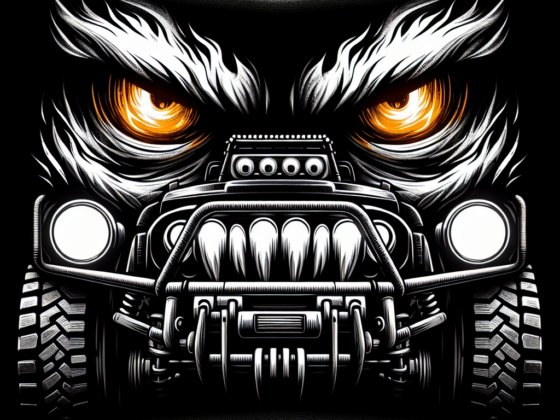So, you’re wondering where exactly the starter is located in a car. Well, look no further, because we’ve got you covered! Whether you’re a car enthusiast or just curious about the inner workings of your vehicle, understanding the location of the starter is a fundamental piece of knowledge. In this article, we’ll explore the answer to this common question and provide you with a clear and concise explanation of where you can find the starter in your car. Buckle up and get ready to learn!
Understanding the Role of a Car Starter
Function of a car starter
When it comes to starting your car, the starter plays a crucial role. The car starter is essentially an electric motor that is responsible for turning over the engine and initiating the combustion process. Without a functioning starter, your car simply won’t start. The starter is connected to the battery and the ignition switch, allowing it to draw power from the battery and send it to the engine. This process engages the starter gears with the engine’s flywheel, allowing the engine to start running.
How does a starter work?
Now that we know the function of a car starter, let’s dive into how it actually works. Inside the starter, there are several key components, including a solenoid, armature, and a set of gears. When you turn the ignition switch, the electrical current from the battery is sent to the starter solenoid. The solenoid then activates, allowing a high amperage current to flow through the starter motor. As a result, the armature spins rapidly, causing the starter gears to engage with the engine’s flywheel. This action initiates the combustion process and brings your car to life.
Common Locations of Starters in Different Car Models
Position of starters in front-wheel-drive cars
Front-wheel-drive cars are designed with the engine located transversely, meaning it is positioned sideways in the engine bay. In most front-wheel-drive cars, the starter is typically located on the front of the engine, near the bottom. This positioning allows for easy access and maintenance when necessary.
Position of starters in rear-wheel-drive cars
Unlike front-wheel-drive cars, rear-wheel-drive cars have their engines positioned longitudinally, or front to back. The starter in rear-wheel-drive cars is usually situated on the backside of the engine, near the transmission bell housing. This placement allows for more efficient power transfer from the starter to the flywheel.
Identifying the Starter in a Front-Wheel-Drive Car
Locating the starter near the transmission
To locate the starter in a front-wheel-drive car, you’ll want to start by looking near the transmission. Typically, it will be positioned towards the bottom of the engine on the side facing the front of the vehicle. The starter is often cylindrical in shape and has wires connected to it.
Visual features of the starter
Front-wheel-drive car starters are generally cylindrical, with a smaller diameter compared to starters in rear-wheel-drive cars. They commonly have a silver or metallic appearance, and you may also notice some electrical connections and mounting bolts on the body of the starter.
Common size of car starters
The size of car starters in front-wheel-drive models can vary slightly depending on the make and model of the vehicle. However, they typically have a diameter ranging from 1.5 to 2.5 inches, with a length of around 6 to 8 inches.
Identifying the Starter in a Rear-Wheel-Drive Car
Locating the starter near the engine block
In rear-wheel-drive cars, the starter is typically positioned on the backside of the engine, near the engine block. You can often find it by looking towards the rear of the engine compartment, close to where the transmission connects to the engine. The starter will be attached to the engine block by several bolts.
Distinct features of the starter
Compared to front-wheel-drive car starters, the starters in rear-wheel-drive cars tend to have a larger diameter. They can also vary in appearance, but commonly have a more robust design with a heavier build. You will likely notice electrical connections and mounting bolts on the starter body.
Typical size of car starters in rear-wheel-drive cars
As mentioned earlier, rear-wheel-drive car starters are generally larger in size than their front-wheel-drive counterparts. They typically have a diameter ranging from 2 to 3 inches, with a length of about 8 to 10 inches.
Starter Locations in Sports and Luxury Cars
Location of starters in sports cars
Sports cars often have unique engine configurations and layouts, which can affect the placement of the starter. In many sports cars, the starter can be found on the rear side of the engine, near the transmission. However, due to the diverse range of sports car designs, it is always best to consult the vehicle’s manual or seek professional help to accurately locate the starter.
Location of starters in luxury cars
Similar to sports cars, luxury cars can have varying engine layouts and designs. The starter in luxury cars is typically positioned near the transmission or the engine block, depending on the specific model. It’s worth noting that luxury cars often prioritize aesthetics and a smooth driving experience, so the starter may be concealed or hidden behind additional components.
Starter Location in Electric and Hybrid Cars
How electric and hybrid cars use starters
Electric and hybrid cars differ from conventional internal combustion engine vehicles in that they use electric motors to start the engine. These vehicles do not have traditional starters like their gasoline counterparts. Instead, they rely on a starter generator or an electric drive motor to initiate the engine’s combustion process.
Identifying starter components in electric and hybrid cars
Although electric and hybrid cars do not have physical starters, they still have components that serve a similar purpose. The starter generator or electric drive motor is usually located at the front or rear of the vehicle, near the engine or transmission. These components are responsible for generating the necessary torque to start the engine in electric and hybrid cars.
Starter Variants in Modern Versus Older Cars
Changes in starter designs over the years
Over time, advancements in technology and engineering have led to changes in starter designs. Modern car starters are often more compact, lightweight, and efficient compared to older models. They may also incorporate features like direct drive systems or gear reduction mechanisms for improved performance and reliability.
How to locate starters in older model cars
In older model cars, the starters are typically larger and have a more traditional design. They are often located in the same positions as stated previously but may appear bulkier and less streamlined. If you are working on an older model car, the starter can usually be found near the engine block or transmission, depending on the vehicle’s drivetrain configuration.
Reasons for Different Starter Locations
Influence of car design on starter location
The location of the starter in a car is primarily determined by the vehicle’s overall design and drivetrain layout. Factors such as engine placement, transmission type, and available space play a significant role in determining the optimal starter location. Different car manufacturers have their own design philosophies, which may result in variations in starter placement across different models and brands.
Optimization of performance with specific starter placements
Additionally, the placement of the starter is carefully considered to optimize performance and efficiency. By positioning the starter in a particular location, car manufacturers can ensure optimal power delivery and torque transfer to the engine’s flywheel. This design consideration helps promote smooth and reliable engine startups, contributing to overall vehicle performance.
Signs of Starter Problems
Issues with starting the car
When a car’s starter starts to malfunction, you may encounter difficulties starting the engine. You might hear a clicking noise when turning the key, or the engine may crank sluggishly or not at all. These issues indicate that there may be a problem with the starter motor or its associated components.
Unusual noises during ignition
Another sign of a potential starter problem is the presence of unusual noises during ignition. If you hear grinding, whirring, or screeching sounds when starting your car, it could be an indication that the starter gears are not meshing correctly or that they have worn out over time.
Visible damage to the starter
In some cases, you may notice visible damage to the starter, such as corrosion, broken wires, or oil leaks. These signs can suggest that the starter has been compromised and needs to be either repaired or replaced.
Maintaining and Replacing a Car Starter
Routine maintenance for maximum starter lifespan
To keep your car starter in good condition, regular maintenance is essential. It is recommended to have your starter inspected during routine service intervals. This allows professional technicians to check for any signs of wear, corrosion, or damage. Additionally, keeping the electrical connections clean and secure can help prolong the lifespan of your car starter.
When to consult a professional for starter issues
If you encounter any problems with your car’s starter, it is important to consult a professional mechanic. They will have the necessary expertise and diagnostic tools to accurately identify the issue and provide the appropriate repairs or replacements. Attempting to fix or replace a starter without the right knowledge and experience can lead to further damage or safety hazards.
Replacing a faulty starter
In the event that your car starter needs to be replaced, it is best to leave the task to a professional. They will have access to the correct replacement starter for your specific make and model. Proper installation ensures that the starter aligns correctly with the flywheel, promoting smooth and reliable engine startups in the future.
In conclusion, understanding the role and location of a car starter is crucial for maintaining and troubleshooting your vehicle. Whether you have a front-wheel-drive, rear-wheel-drive, electric, or hybrid car, knowing where your starter is located and how it functions will help you identify problems and take appropriate action. Regular maintenance, timely repairs, and professional assistance are key to ensuring a long-lasting and efficient car starter for a smooth driving experience.









